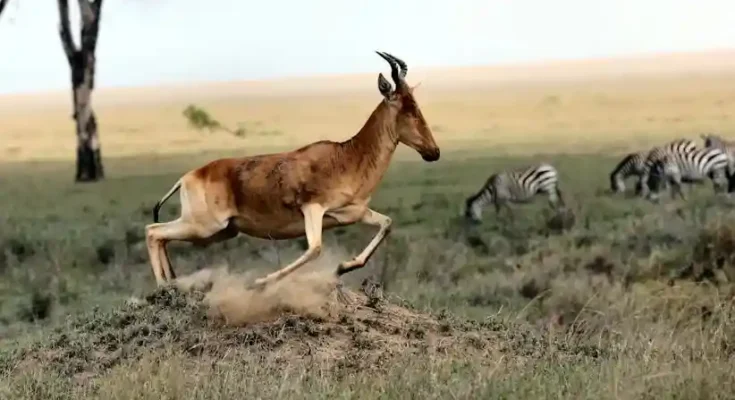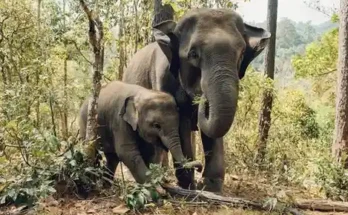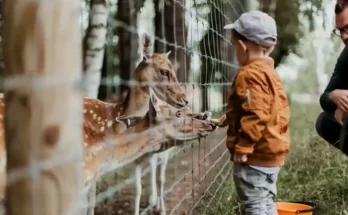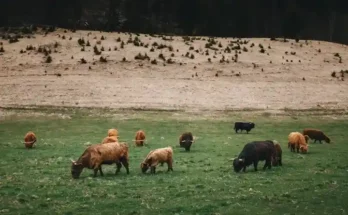Introduction to the Animal Kingdom:
The animal kingdom is a vast and mysterious domain teeming with life, movement, and instinct. From the dense Amazon rainforest to the icy stretches of Antarctica, animals have carved out extraordinary ways to survive and thrive. They dazzle us with their intelligence, warm our hearts with their loyalty, and sometimes terrify us with their raw power. But above all, animals are a critical part of the ecosystem that sustains life on Earth.
Animals have been our companions, our sources of food, our myths and our muses. As our planet evolves, so too do the creatures that inhabit it. To understand animals is to understand nature itself. Let us dive deep into their incredible world and uncover the stories that shape their existence.
The Diversity of Animal Life:
- From Tiny Insects to Towering Mammals
When most people think of animals, they often imagine furry creatures like lions or dogs. But the animal kingdom is staggeringly diverse. There are more species of insects than any other group, with beetles alone accounting for nearly 400,000 known types. On the other end of the scale, we have the elephant, the largest land mammal, and the blue whale, the largest animal to have ever lived on Earth.
Each of these creatures, no matter how small or large, plays a role in the complex web of life. Bees pollinate the flowers that grow into our food. Vultures clean up dead animals and prevent the spread of disease. Even the tiny plankton drifting through the oceans contribute to oxygen production and help regulate the climate.
- Exploring Habitats Around the World
Animals are not bound to a single environment. They have adapted to live in some of the harshest climates on the planet. Camels traverse the scorching desert sands with ease. Penguins huddle together to survive the frigid Antarctic winters. In tropical rainforests, howler monkeys swing from branch to branch under the canopy, while jaguars stalk the forest floor.
These environments shape the behaviors, diets, and physical traits of the animals that live within them. Desert creatures often have nocturnal habits to avoid daytime heat. Arctic animals tend to have thick fur or blubber for insulation. The beauty lies in the endless variety of adaptations that have evolved over millennia.
Intelligence and Emotion in Animals:
- Surprising Minds in the Wild
It is often assumed that intelligence is uniquely human, but many animals show remarkable mental abilities. Crows can solve puzzles and remember faces. Dolphins communicate with complex sounds and even recognize themselves in mirrors. Elephants mourn their dead and display signs of empathy and self-awareness.
Primates like chimpanzees and bonobos have been seen using tools and learning sign language. Dogs can learn hundreds of words and respond to human emotions. Even octopuses, with their alien-like appearance, show problem-solving skills and the ability to escape enclosures using surprising ingenuity.
These examples challenge our understanding of what it means to be intelligent. They remind us that humans are not the only species capable of thought, feeling, and connection.
- Emotional Bonds and Social Structures
Animals are not just instinct-driven automatons. Many form tight-knit communities and demonstrate loyalty, affection, and even grief. Wolves live and hunt in packs with defined social roles. Orcas travel in pods and raise their young together. Meerkats post sentries while the rest of the group forages, showing cooperation and mutual trust.
Among domesticated animals, dogs are perhaps the clearest example of emotional bonds. Their loyalty and attachment to humans are well documented and deeply felt. Cats may be more independent, but they too form strong attachments and can be deeply affectionate.
Love, fear, playfulness, jealousy – these are not uniquely human emotions. Observing animals closely reveals that they experience life in complex and emotional ways.
The Circle of Life and Animal Survival:
- Predators and Prey
Every animal, from the tiniest insect to the most fearsome predator, is part of a delicate balance. Predators like lions, sharks, and eagles keep populations of prey animals in check, preventing overgrazing or overpopulation. In turn, prey species like zebras, rabbits, and antelopes evolve to be faster, more alert, and more adaptive to avoid capture.
This predator-prey dynamic is not just about the chase. It’s about maintaining the health of ecosystems. Apex predators help control the population of other species, which in turn helps vegetation and smaller creatures thrive.
Some animals also blur the line between predator and prey. Bears, for instance, are omnivores and might feast on berries one day and salmon the next. Survival is not always about domination but often about flexibility and learning.
- Strategies for Staying Alive
To survive, animals have developed some truly astounding adaptations. Chameleons change color to blend into their surroundings. Arctic foxes turn white in the winter and brown in the summer. Pufferfish inflate to scare off predators. Certain frogs secrete toxins through their skin to deter would-be attackers.
Mimicry is another fascinating strategy. The harmless milk snake mimics the coloration of the deadly coral snake. Some butterflies have wing patterns that look like eyes to confuse birds. And let us not forget hibernation and migration.
For scientific explanations on behavioral and physical adaptations, see the National Park Service article on animal adaptations which outlines how species survive harsh environments like winter and heat through camouflage, migration, and behavioral changes.
Every adaptation tells a story of evolution, of trial and error across generations. These mechanisms show just how far animals will go to protect themselves and ensure the survival of their species.
The Role of Animals in Human Life:
- Companions and Helpers
Animals have been our companions for thousands of years. Dogs were likely the first domesticated animals, bred from wolves to help with hunting and guarding. Over time, they became beloved family members. Horses have carried humans across continents, pulled plows and wagons, and served in battle.
Cats helped keep grain stores free of mice and now rule our living rooms. Birds, rabbits, and even reptiles are cherished pets. Beyond companionship, animals serve essential roles. Guide dogs assist the visually impaired. Therapy animals offer emotional comfort to those struggling with mental health. Police dogs sniff out danger. Their contributions go far beyond what we often realize.
- Cultural and Spiritual Significance
Animals also hold symbolic meaning across cultures. In Native American traditions, animals are often spiritual guides. In Hinduism, cows are sacred and represent nonviolence and abundance. Ancient Egyptians worshipped cats and saw them as protectors of the home and the soul.
From Chinese zodiac signs to African folktales, animals appear in myths, legends, and religious rituals around the globe. Their presence in our stories reflects our deep-rooted connection with them and our admiration for their qualities.
Conservation and the Future of Animals:
- Threats Facing Wildlife Today
Unfortunately, the modern world poses serious threats to animal life. Habitat destruction, pollution, poaching, and climate change are pushing countless species toward extinction. The majestic tiger, once roaming across much of Asia, is now critically endangered. Coral reefs, which support thousands of marine species, are bleaching and dying due to warming oceans.
Plastic waste in the oceans is killing sea turtles and birds. Deforestation is wiping out the homes of orangutans and sloths. The loss of even one species has a ripple effect throughout the ecosystem.
- Hope Through Conservation
Despite these challenges, there is hope. Conservation efforts around the world are working to protect endangered species and restore habitats. National parks provide safe havens for wildlife. Organizations are fighting illegal poaching and trafficking. Breeding programs are bringing animals like the California condor and black-footed ferret back from the brink.
To read about real global conservation projects, see this post on wildlife partnerships.
Public awareness is also growing. More people are choosing sustainable products, supporting wildlife charities, and advocating for animal rights. Every small action counts in the effort to protect the creatures with whom we share this Earth.
Conclusion:
Animals are more than just creatures we observe from afar. They are silent teachers, showing us the strength of instinct, the power of adaptation, and the beauty of coexistence. In their eyes, we glimpse the mysteries of the natural world and our place within it.
To care for animals is to care for ourselves. By preserving their habitats and respecting their lives, we also protect the delicate balance that sustains all life on Earth. The animal kingdom invites us to look closer, to listen deeper, and to walk more gently on the planet we call home.




